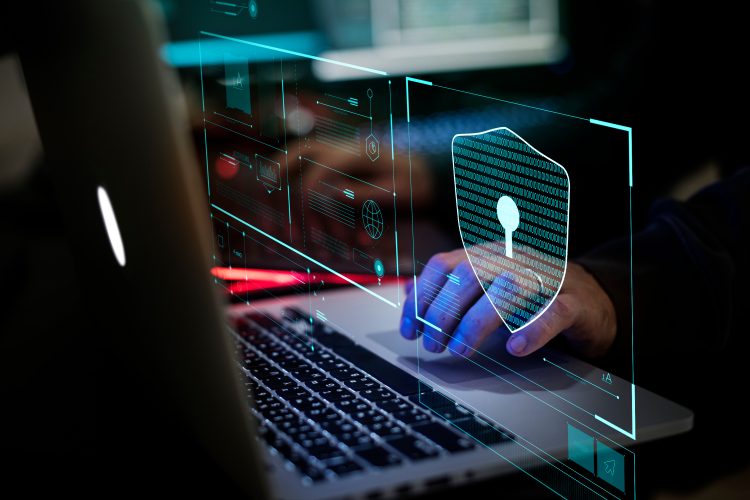Stay ahead of cyberattacks: A guide to cybersecurity
- Like
- Digg
- Del
- Tumblr
- VKontakte
- Buffer
- Love This
- Odnoklassniki
- Meneame
- Blogger
- Amazon
- Yahoo Mail
- Gmail
- AOL
- Newsvine
- HackerNews
- Evernote
- MySpace
- Mail.ru
- Viadeo
- Line
- Comments
- Yummly
- SMS
- Viber
- Telegram
- Subscribe
- Skype
- Facebook Messenger
- Kakao
- LiveJournal
- Yammer
- Edgar
- Fintel
- Mix
- Instapaper
- Copy Link
Posted: 24 February 2023 | Louie Orbeta | 1 comment
Louie Orbeta, CISSP and Manager, Cybersecurity & IT Infrastructure from Winnipeg Airports Authority tells International Airport Review how crucial it is for airports to implement a strong cybersecurity programme and gives his steps to success.


Implementing an effective cybersecurity programme is crucial to the aviation industry in today’s digital era. We must address the potential of cyber attacks since businesses increasingly rely more on technology and the internet for their operations. The effects of a successful cyber attack can be disastrous, whether it be the theft of sensitive information, downtime, financial loss or reputational harm. Organisations need to prioritise and invest in cybersecurity measures to protect their assets, customers, and overall business.
Organisations must take proactive steps to strengthen their cybersecurity posture since cyber threats are occurring more frequently and are becoming more sophisticated. In the following sections, we will go over the crucial actions businesses must take to strengthen their cybersecurity and lower the chances of a successful attack.
Step 1: Risk management
The process of evaluating the potential impact and likelihood of specific risks to the organisation is known as Risk Analysis. This is a critical component of Risk Management, which involves identifying, assessing and prioritising risks to reduce or mitigate their impact.
Identifying potential risks, assessing their likelihood of occurrence and determining the potential impact of each risk is all part of Risk Analysis. After identifying and evaluating the risks, the organisation can devise strategies to mitigate or minimise their impact.
Risk Analysis uses a variety of techniques, including both qualitative and quantitative techniques. Qualitative approaches are used to detect potential risks, assess their likelihood, and gauge their impact. They often entail expert opinion. Comparatively, quantitative methods use statistical and mathematical analysis to assess the likelihood and potential consequences of hazards.
The organisation can design and implement methods to address the risks once they have been identified and analysed. This step is covered under Risk Control: Risk acceptance, risk transfer, risk avoidance, and risk reduction are a few examples of these tactics. While risk reduction requires taking measures to lessen the danger’s possibility or effects, risk avoidance is completely avoiding the risk. Risk acceptance entails accepting the risk and making plans for its effects, whereas risk transfer entails shifting the risk to another entity, such as through insurance.
Step 2: Strategy
Following the completion of the Risk Management phase, here are the ways to help protect your organisation from cyber attacks:
- Cybersecurity Policies: Develop a comprehensive cybersecurity policy that outlines your approach to managing cybersecurity risks. These should be regularly reviewed and updated to ensure the policies are current and effective. These policies should include:
- Information Security Policy: Describes how the business manages and safeguards confidential information, including data encryption, access restrictions and incident response processes
- Acceptable Use Policy: Establishes standards for employee conduct to reduce the risk of security breaches and defines acceptable use of company resources, such as computers, networks and software
- Incident Response Policy: Describes the steps to take in the event of a cybersecurity incident, including the need to report and how to handle and escalate
- Password Policy: Outlines standards for establishing and maintaining secure passwords and recommendations for password security
- Remote Access Policy: Provides rules and procedures for staff members who utilise virtual private networks (VPNs) and other types of remote access to access company resources
- Third-Party Vendor Management Policy: Describes how the business will handle the risks brought on by outside suppliers and service providers, including security evaluations and contractual obligations
- Compliance Policy: Describes how the business complies with pertinent cybersecurity laws, rules and standards
- Data Backup and Disaster Recovery Policy: Describes the company’s strategy for data backup and disaster recovery, including routine backups, off-site storage and disaster recovery protocols
- Employee Awareness and Training Policy: Describes the company’s employee education programme, which aims to inform staff members about cybersecurity risks and best practices.
- Employee Education and Awareness: Regularly train staff members on the best practices for cybersecurity and its value. This includes teaching staff members about the dangers of phishing and social engineering and the importance of maintaining current software and systems
- Access Control: Implement stringent access controls to ensure that only authorised individuals can access critical information and systems. Implement strong password policies and multi-factor authentication, regularly update passwords, and monitor and log user access
- Network and Device Security: Put strong network and device security measures in place; Firewalls, intrusion detection systems, and antivirus software are a few examples of these safeguards
- Email Filtering: Scan and filter all incoming and outgoing emails to stop harmful payloads and phishing attacks from being launched inside the network
- Network Traffic Monitoring: Provides the organisation with rapid identification and response to security issues through real-time visibility into network activities
- Password Manager: By employing encryption and a master password, this tool lets users securely store and manage their passwords for various accounts
- Patch Management: Update software and systems with the most recent security fixes
- Backup and Disaster Recovery: Back up critical information frequently, keep backups off-site, and ensure its integrity by scheduling regular disaster recovery exercises
- Data Encryption: Utilise data encryption to safeguard sensitive information in-transit and at-rest. This applies to information kept on computers, laptops, and portable electronics
- Vulnerability Assessments and Penetration Testing: To find and fix vulnerabilities in systems and networks, organisations should routinely carry out vulnerability assessments and penetration testing. Consider working with a trusted security expert to assess and address vulnerabilities
- Third-Party Vendor Management: Consider the cyber threats posed by third-party suppliers and service providers. This entails conducting routine security audits and contractually requiring contractors to adhere to specific security requirements.
In conclusion, a strong cybersecurity programme is essential to modern businesses since it protects against loss, destruction, and unauthorised access to critical information and resources. A company’s data and systems can be kept safe, intact, and accessible by investing in effective cybersecurity measures, which reduce the likelihood of cyberattacks and ensures the business’ stability and longevity. Giving cybersecurity a high priority protects organisations from the constantly evolving threat landscape to continue operating successfully and efficiently.


















Was looking for some takes regarding this topic and I found your article quite informative. It has given me a fresh perspective on the topic tackled. Thanks!